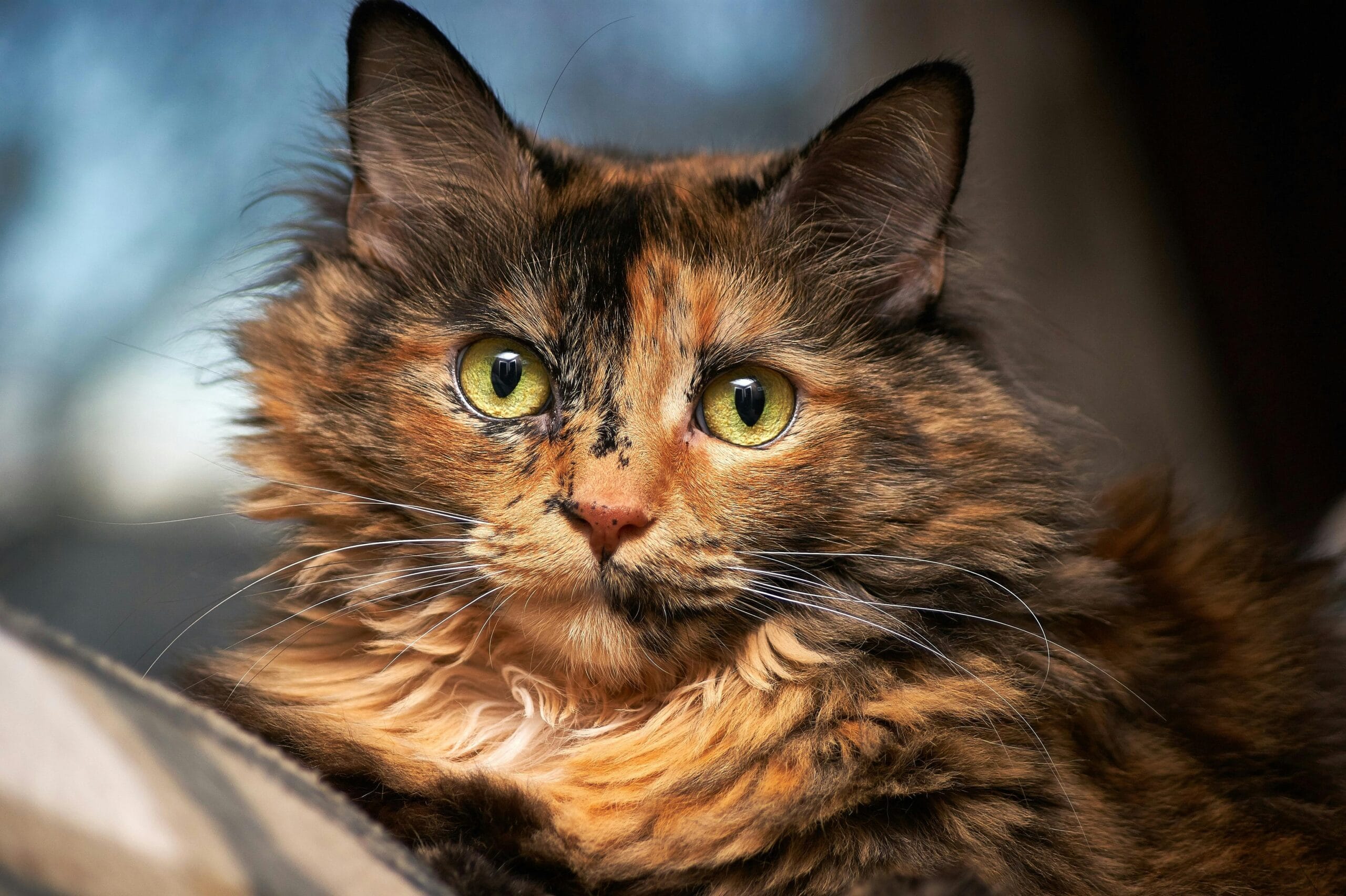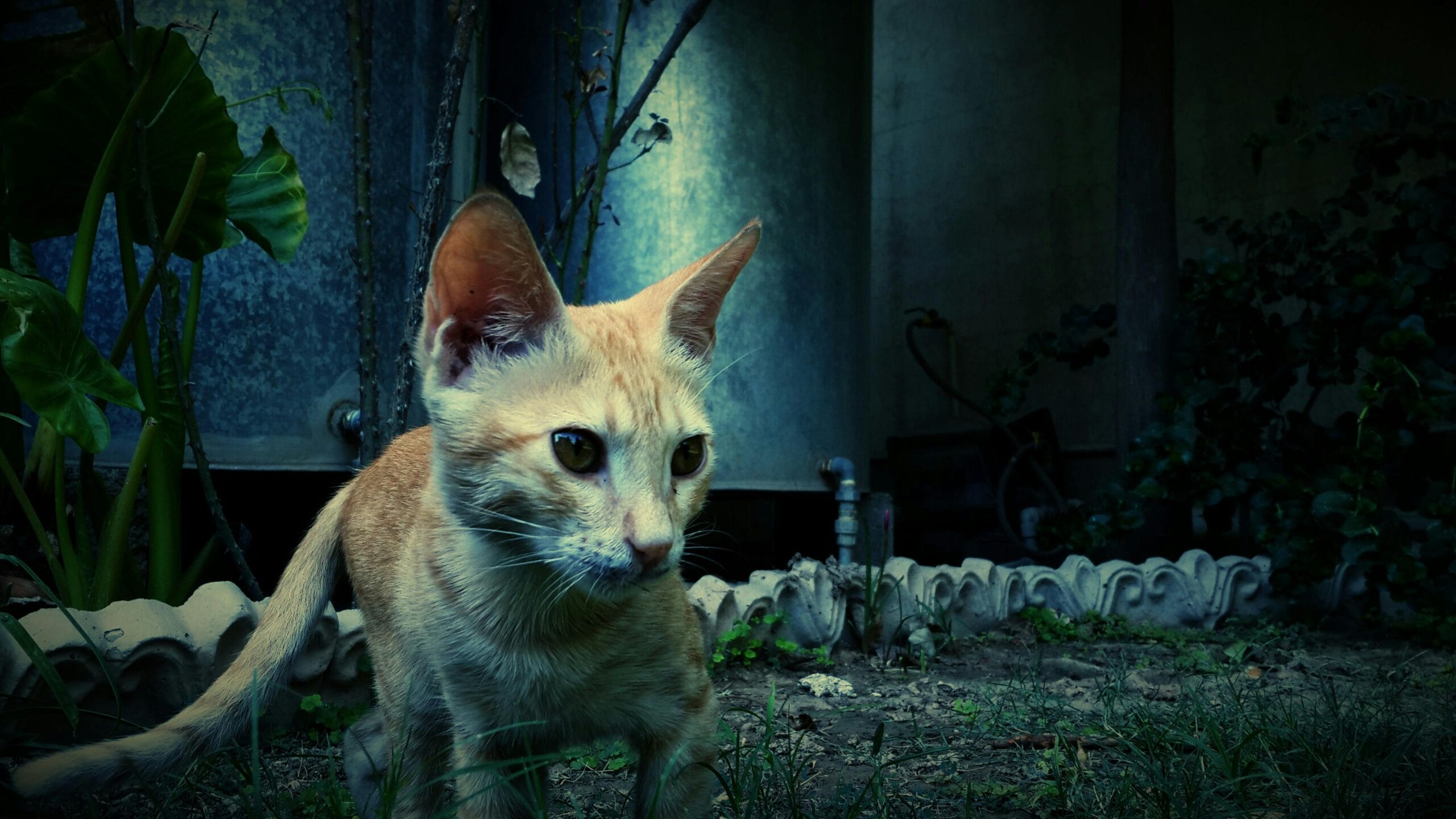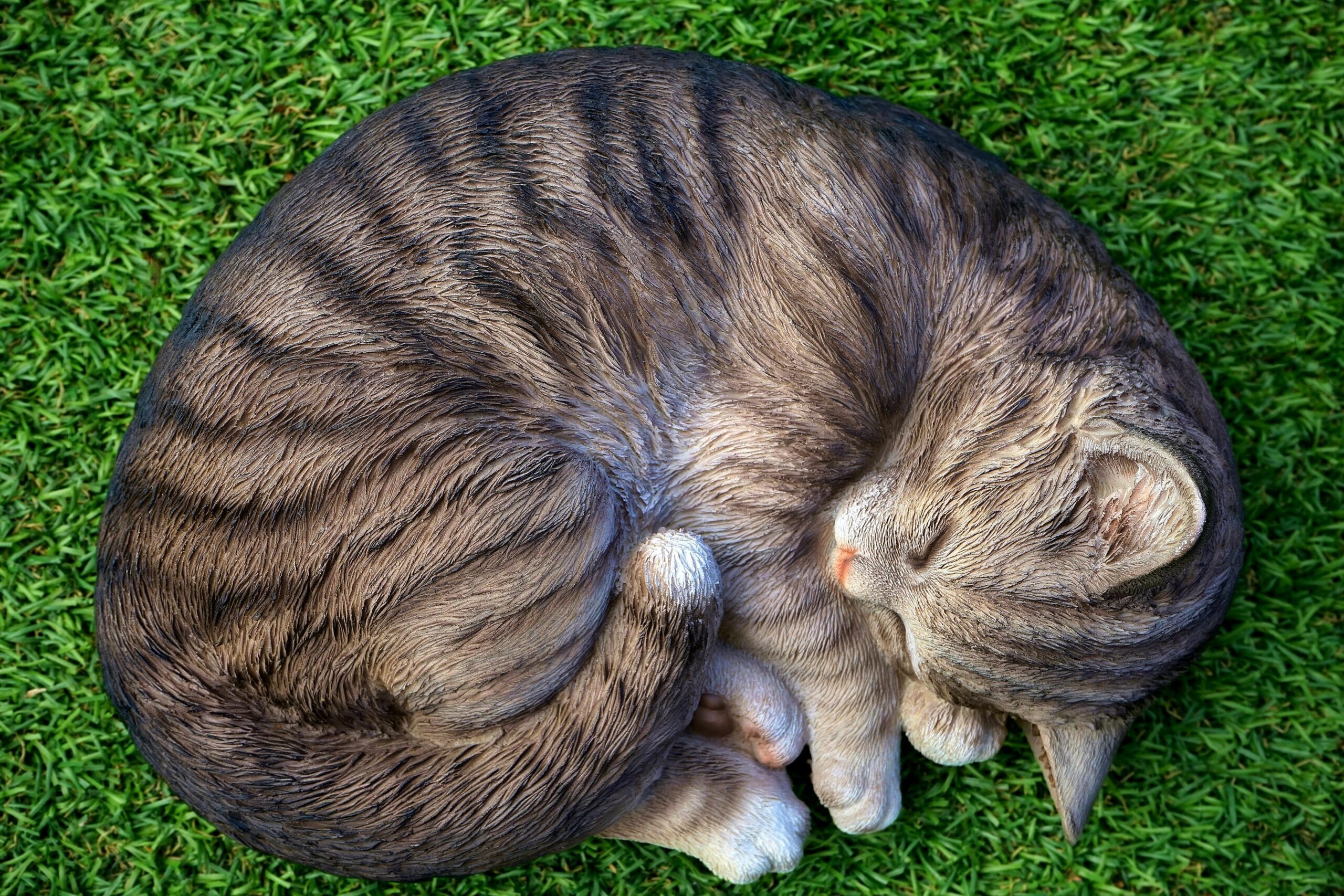Can A Blind Cat Live A Normal Life ?

Can a blind cat live a normal life? Discover expert tips on blind cat care and learn how to provide a happy, fulfilling life for your visually impaired feline. Caring for a blind cat is easier than you think! Read now!
Can A Blind Cat Live A Normal Life? A Comprehensive Guide to Blind Cat Care
Many people wonder, “Can a blind cat live a normal life?” The answer is a resounding yes! While a blind cat requires some adjustments and extra care, they can live happy, fulfilling lives with the right support. This comprehensive guide will explore everything you need to know about blind cat care and how to ensure your feline friend thrives, despite their visual impairment.
Understanding the Challenges of Blindness in Cats
Before diving into caring for a blind cat, it’s crucial to understand the challenges they face. Loss of vision doesn’t automatically mean a diminished quality of life. However, cats rely heavily on their sight for navigation, hunting, and social interaction. A blind cat will need to adapt to using their other senses – hearing, smell, and touch – to navigate their environment. This adaptation process takes time and patience, both from the cat and the owner.
Some common challenges include difficulty locating food and water bowls, navigating unfamiliar spaces, and potential anxiety due to the inability to visually assess their surroundings. However, with the right approach, these challenges can be minimized significantly.
Creating a Safe and Secure Environment for Your Blind Cat
The key to a happy blind cat is a safe and consistent environment. This means minimizing changes and potential hazards. Here’s how you can adapt your home to make it safe and comfortable for your blind friend:
Securing the Home
Remove any potential hazards, such as toxic plants, cleaning supplies within reach, and unsecured electrical cords. Consider using baby gates or other barriers to restrict access to areas that might be dangerous. Cover any reflective surfaces, which can startle or disorient your cat. Always keep doors and windows closed or secured with screens. A sudden drop could be particularly hazardous.
Designated Safe Spaces
Provide designated “safe spaces” where your cat can rest and feel secure. These spaces should be quiet, comfortable, and free from distractions. A cat bed in a quiet corner, or even a comfortable cardboard box, can serve as a comforting retreat. Consistency is crucial; ensure these spaces remain undisturbed.
Consistent Furniture Placement
Once your furniture is arranged, try to keep it in the same place as much as possible. Blind cats rely heavily on spatial memory, so rearranging the furniture can create confusion and anxiety. Even small changes can be disorienting. Remember that this predictability will help your blind cat build a clear mental map of their home.
Feeding and Hydration for Blind Cats
Feeding a blind cat might require some adjustments. Use a non-slip bowl to prevent spills. Place the food and water bowls in the same consistent location, using tactile cues like a rubber mat to help your cat locate them. Consider using a food dispenser with raised edges or a special slow feeder to help your cat feel and find their food easily. This method eliminates the stress of finding food every time.
Training and Socialization: A Gentle Approach
Training a blind cat is similar to training any cat, but it requires patience and a focus on tactile and auditory cues. You can use positive reinforcement techniques, such as treats and praise, to guide your cat. Use distinct sounds or verbal cues to indicate mealtimes, playtimes, or when it’s time to head to their safe spaces. For example, you can ring a bell before placing down the food bowl. It helps in developing a routine and allows your cat to anticipate.
Socialization is also important. Introduce your blind cat to other pets gradually and ensure the interactions are positive and supervised. Allow your cat ample time to explore its surroundings and get comfortable with familiar sounds and scents.
Playtime and Enrichment for Blind Cats
Playtime is essential for mental and physical stimulation, even for blind cats. Use toys that make noise or have distinct textures, such as crinkle balls or stuffed toys with interesting smells. You can also engage your cat with interactive play using a feather wand or a laser pointer, remembering to keep the laser pointer always in sight.
Providing a variety of textures and sounds will help enrich your cat’s environment. A scratching post with a different texture can be a helpful addition. The various textures can aid in their sensory exploration.
Veterinary Care for Blind Cats
Regular veterinary check-ups are critical for blind cats. Their inability to see might make it harder to detect injuries or illnesses early. Your vet can provide guidance on specific needs and monitor for any complications related to their vision loss. Early detection is crucial in effective management and treatment.
Be sure to discuss any concerns about your cat’s behavior with your vet. A sudden change in appetite, litter box habits, or vocalization can be indicative of an underlying problem, especially since you may not immediately observe other physical signs. Seeking expert advice from a veterinary ophthalmologist could also prove very helpful.
Long-Term Care and the Lifespan of a Blind Cat
With proper care, a blind cat can live a normal lifespan. Consistent routines, a safe environment, and lots of love and attention are key to ensuring your cat’s well-being. Remember that consistency is crucial. Sticking to a regular routine will help reduce stress and allow your cat to navigate their world more effectively.
It is also important to remain patient and understanding. It takes time for a blind cat to adjust. Be prepared for a learning curve; both you and your cat will need time to learn new ways to interact and communicate.
Addressing Common Concerns about Blind Cats
Many owners worry about their blind cat’s ability to find their litter box. To help, place the litter box in a consistent location and use a distinct litter to provide tactile cues. Consider adding a textured mat to the entrance, allowing your cat to easily locate the litter box. The use of a uniquely textured litter can also be helpful.
Another concern is about the possibility of your cat bumping into objects. This is less of a concern than you might expect. Cats possess excellent hearing and a refined sense of spatial awareness. Through experimentation and a period of adjustment, they learn to navigate using these senses.
You can learn more about feline blindness and its management from the American Veterinary Medical Association website, which offers reliable information on pet health.
Can A Blind Cat Live A Normal Life? The Final Verdict
Yes, absolutely! While adjusting to a blind cat requires understanding and patience, it’s entirely possible to provide a loving and enriching environment where your feline friend can thrive. By creating a safe and consistent home, providing attentive care, and enriching their lives with stimulating activities, you can help your blind cat live a happy and fulfilling life. This dedication, along with the right approach, ensures your beloved companion enjoys a remarkable and fulfilling life.
A blind cat’s life can be just as joyful as a sighted cat’s! With a committed owner and the right strategies for blind cat care, you can significantly improve the quality of their lives. Remember that your cat’s ability to adapt may take time, so patience is vital in caring for a blind cat.
We’ve also learned the importance of a safe and enriched environment. Implementing the measures described throughout this article is key to supporting your feline friend. Remember, you are providing essential support and ensuring the best quality of life for your cat. Consider also the recommendations from the American Society for the Prevention of Cruelty to Animals on pet care, especially on specialized needs.
For more in-depth information on specific aspects of caring for a blind cat, including detailed training techniques and dietary considerations, consider consulting a veterinary behaviorist. They can offer personalized advice tailored to your cat’s individual needs and personality.
Now, we want to hear from you! Have you cared for a blind cat? Share your experiences, tips, and advice in the comments below. Let’s build a supportive community for all blind cat owners! Your story may help others find the answers they are seeking related to Can a blind cat live a normal life? and what is involved in blind cat care.

FAQ: Can a Blind Cat Live a Normal Life?
Q: Can a blind cat live a happy and normal life?
A: Yes! With proper Blind Cat Care, blind cats can lead fulfilling lives. They adapt remarkably well and can be just as playful and affectionate as sighted cats.Q: How do blind cats navigate their environment?
A: Blind cats rely on their other senses – hearing, smell, and touch – to navigate. They learn the layout of their home and become very attuned to sounds and scents.Q: What special care do blind cats need?
A: Caring for a blind cat involves creating a safe and predictable environment. This includes removing hazards, using scent markers to guide them, and providing consistent routines.
Q: Is it cruel to keep a blind cat?
A: No. Many blind cats thrive with appropriate Blind Cat Care. It’s more important to provide a loving and supportive environment than to focus on their blindness.Q: Can a blind cat be litter box trained?
A: Yes, blind cats can be litter box trained. Using a consistent location and a distinctive litter box (e.g., different texture) can help.Q: Are blind cats more prone to injury?
A: While blind cats may be slightly more prone to minor bumps and scrapes, careful environmental modification significantly reduces this risk.
Q: Can I adopt a blind cat?
A: Absolutely! Many shelters and rescues have blind cats available for adoption. They often make wonderful companions.Q: How can I help my blind cat feel secure?
A: Maintain a consistent routine, use scent markers, and keep furniture in the same places. A soft, familiar bed in a safe spot will also help them feel secure. Gentle, regular interaction is crucial.Q: What are the signs of a blind cat?
A: Signs can include bumping into objects, dilated pupils, lack of response to visual stimuli, and possibly cloudy or opaque eyes.
- Q: Where can I find more information on Blind Cat Care?
A: Consult your veterinarian, search online for resources focused on caring for a blind cat, or contact animal welfare organizations specializing in visually impaired animals. They can provide valuable advice on how to best support your blind cat.

Can a Blind Cat Live a Normal Life?
Yes! Blind cats can absolutely live happy, fulfilling lives with the right care and adjustments. While initially challenging, adaptation is key for both the cat and its owner.
Practical Tips for Caring for a Blind Cat:
- Maintain a Consistent Environment: Avoid rearranging furniture frequently. A predictable space reduces anxiety and prevents accidents. Use scent markers to help your cat navigate.
- Safe Home Environment: Secure potential hazards like stairs, open windows, and toxic substances. Use baby gates or other barriers to restrict access to dangerous areas.
- Gentle Guidance: Use verbal cues and gentle touch to guide your cat. A soft “Here kitty, kitty” can help them find you or their food.
- Tactile Toys: Opt for toys with textured surfaces or crinkly sounds to stimulate play. Balls with bells or crinkle balls are good choices.
- Designated Eating and Sleeping Areas: Keep food and water bowls in the same place, as well as their bedding. This creates a sense of security.
- Identify and Address Anxiety: Be patient and understanding. A blind cat may exhibit anxious behaviors initially. A calming pheromone diffuser can be beneficial.
- Regular Vet Checkups: Ensure regular veterinary visits for health monitoring and to address any age-related issues. Early detection is crucial.
Health Considerations for Blind Cats:
- Increased Risk of Injury: Blind cats are more prone to injuries from falls or collisions. A safe environment is paramount.
- Potential for Weight Gain: Reduced activity can lead to weight gain. Maintain a healthy diet and encourage play.
- Dental Care: Blind cats can be more challenging to brush, but regular dental checkups are vital to prevent dental disease.
- Grooming Challenges: Regular grooming is important; you may need to assist with this. Matted fur can be painful and uncomfortable.
- Early Detection of Other Health Issues: Regular vet checkups are crucial to identify any other potential health issues early on.
Conclusion:
With love, patience, and a safe and predictable environment, a blind cat can live a happy and normal life. Remember to focus on their well-being and adjust your routines to accommodate their needs. The rewards of providing a loving home far outweigh the challenges.
Keywords: blind cat, blind cat care, caring for a blind cat, blind cat health, cat blindness, adopting a blind cat, blind cat tips, helping a blind cat